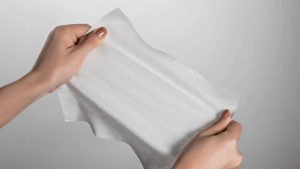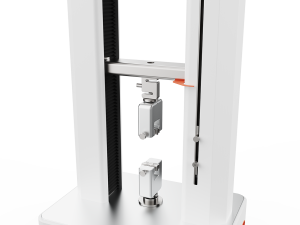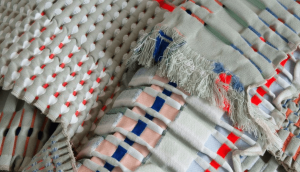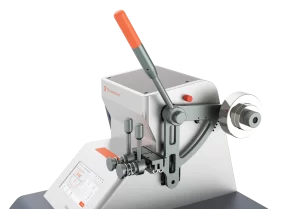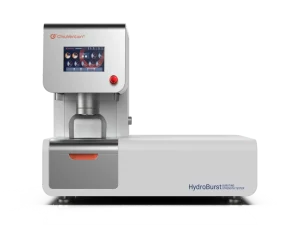We usually wear clothes jumper elbow is particularly easy to deformation, knitted trousers of the knee is the first to wear out of the hole, not to mention wearing socks from time to time have toes drilled out to observe the world, the consumer will often send out questions. Are these situations the quality of the fabric? Or the characteristics of the fabric itself? In fact, these questions boil down to whether the fabric is durable. Clothing strength assessment indicators are mainly divided into: fabric breaking strength, tearing strength, seam strength, seam slippage (also known as the degree of error), top breaking strength and bursting strength. The assessment items and requirements vary from product to product.
Tensile Strength
Testing Principle
The principle of the Tensile strength test is to specify the size of the fabric specimen, with a constant elongation rate until the break. At present, the main products to assess the Tensile strength of fabrics are washed and finished garments, denim garments and bedding.
Test standard
GB/T 3923.1-2013 Textiles Tensile properties of fabrics Part 1: Determination of breaking strength and elongation at break (strip method)
GB/T 3923.2-2013 Tensile properties of textile fabrics Part 2: Determination of breaking strength (gripping method).
Test Methods
- Strip Method
Scope of application
Mainly applicable to woven fabrics, but also to fabrics produced by other techniques, not normally used for elastic fabrics, geotextiles, glass fibre fabrics and carbon fibre and polyolefin flat yarn fabrics.
Test Principle
A fabric specimen of a specified size is stretched at a constant elongation rate until it breaks. Record the breaking strength and elongation at break, and if necessary, record the breaking strength and elongation at break.
Specimen Requirements
Cut two sets of specimens from each laboratory sample, one set for the warp (or longitudinal) specimen, the other set for the weft (or transverse) specimen. Each group of specimens should include at least 5 pieces of specimens, if there is a higher precision requirements, the number of specimens should be increased. The specimens should be at least 150mm from the edge of the cloth. the warp (or longitudinal) specimen group should not take samples on the same length, the weft (or transverse) specimen group should not take samples on the same length. The effective width of each specimen should be 50mm ± 0.5mm (excluding raw edges), and its length should be able to meet the spacing length of 200mm. If the elongation at break of the specimen is more than 75%, the spacing length can be 100mm.
- Grab method
Scope of application
Mainly applicable to woven fabrics, also applicable to other technical production of fabrics, usually not used for elastic fabrics, geotextiles, glass fibre fabrics, and carbon fibre and polyolefin flat silk fabrics.
Test Principle
The central part of the specimen is clamped with the specified size clamp, and the specimen is stretched at a constant speed until it breaks off, and the breaking strength is recorded.
Specimen Requirements
From each laboratory sample cut two groups of specimens, one group for the longitudinal (or longitudinal) specimen, and the other group for the weft (or transverse) specimen. Each group of specimens should include at least 5 pieces of specimens, if there is a higher precision requirement, the number of specimens should be increased. The specimens should be at least 150mm away from the edge of the cloth. the warp (or longitudinal) specimen group should not take samples on the same length, the weft (or transverse) specimen group should not take samples of the same length. The width of each specimen should be 100mm ± 2mm, the length should be able to meet the spacing length of 100mm.
Test Apparatus
SmartPull Textile Tensile Tester, available at single head and dual heads, can do tension, compression, bending, tearing, shearing, peeling, and top-breaking tests. Detailed parameters can be found on this page.
Tear Strength
Testing Principle
The principle of tearing strength is fabric tearing, also known as tearing, fabric local yarns are subjected to a concentrated load, so that the phenomenon of fabric tearing. Fabrics in the process of use, clothing hooked by the object, the local yarns are pulled off, so that the fabric forms a strip or triangular cracks, which is also a kind of fracture phenomenon.
Test Standard
Impact pendulum method GB/T 3917.1-2009, ISO 13937.1: 2000 and ASTM D 1424-09 (2013);
Trouser method GB/T 3917.2-2009, ISO 13937.2: 2000 and ASTM D 2261-2013;
Trapezoidal method GB/T 3917.3-2009.
Test Methods
There are two test methods: the impact pendulum method and the trouser specimen method.
Impact Pendulum Method
The test of tearing strength is to fix the specimen on the fixture, cut the specimen into an incision, and release the pendulum in the position of maximum potential energy, when the movable fixture leaves the fixed fixture, the specimen will be torn along the direction of the incision, and the work done to tear the fabric of a certain length will be converted into the tearing force. The test standard is GB/T 3917.1-2009 “Textiles Tearing Performance of Fabrics Part 1: Determination of Tearing Strength by Impact Pendulum Method”. This method is mainly used for the testing of denim garments in daily testing.
Trouser Method
The two legs of the trouser specimen are clamped so that the specimen notch line is straight between the upper and lower clamps. The instrument is switched on to apply the tensile force in the direction of the cut, the tearing strength is recorded until it is torn to the specified length, and the tearing strength is calculated by an electronic device.
Improvement Measures
- Blending with high-performance fibres to improve the tearing performance of fabrics by increasing yarn strength.
- Improve the warp and weft density of the fabric, increase the flexural wave height, increase the number of yarns in the force triangle of the fabric in the tearing process, and improve the tearing performance of the fabric by increasing the weaving shrinkage of the yarns and the number of force roots.
- Change the fabric organisation to improve the moving ability of yarns in the organisation during the tearing process, and improve the tearing performance of fabrics by increasing the number of yarn roots under force.
Test Apparatus
The ElmenGuide Elmendorf tearing strength tester, also known as the Pendulum Tearing Tester, do the bursting test by using a pendulum tearing method. It is mainly suitable for woven fabrics, but also for other textiles produced by other technologies, such as non-woven fabrics.
Seam Slippage
When testing finished garments, we will test for yarn slippage (also known as slip) at the seams in accordance with the requirements and methods specified in the corresponding product standards.
Test Principle
The principle of seam slip is that the determination of yarn slip resistance at the seams of woven fabrics involves folding a rectangular specimen and sewing it along the width. Then it is cut along the fold, the specimen is held in a gripper and a tensile load is applied perpendicular to the seam direction to determine the amount of slip produced when the specified load is applied.
Testing Standards
In daily testing, the commonly used standard is GB/T 13772.2-2008 “Determination of yarn slip resistance at the seams of woven fabrics Part 2: Constant load method”, which is mainly used for the testing of conventional woven fabrics.
The test direction is mainly divided into two kinds as follows:
- warp slip refers to the slip of weft yarns on warp yarns, corresponding standards are: ASTM D434, ASTM D1683
- weft slip refers to the slip of the warp yarn on the weft yarn, corresponding to the standard: GB/T 13772.1, ISO 13936.1
The two are opposite, so when we get the test report, we must see which direction of yarn slip is worse.
Test Methods
Sewing first, stretching at both ends in the direction perpendicular to the sewing line. Two kinds are included:
① Fixed-opening tensile load
② Fixed tension load measurement of the opening
There are two common numerical standards:
Fixed opening (0.6cm) to see the tension load (N)
Constant tension load (N) to see the opening (0.6cm).
In China, the opening of regular fabrics is 0.6cm, and the tensile load is 120N.
Other standards refer to customer requirements, such as the European standard opening 0.3cm, tensile load 80N.
Test Apparatus
ChiuVention’s Elmendorf tearing strength tester can also be applicable for measuring this test. However, it is not suitable for knitted fabrics, woven elastic fabrics, and fabrics in which the tearing direction will change during tear testing.
Seam Strength
Testing Principle
Seam strength of woven fabrics is tested by stretching a specimen of a specified size (with a seam in the centre) in the direction perpendicular to the seam at a constant rate of elongation until the seam breaks. The maximum force at which the seam breaks is recorded.
Test Standards & Methods
There are two common methods for testing the seam strength of woven fabrics as follows:
GB/T 13773.1-2008 “Seam Tensile Properties of Textiles Seams of Fabrics and Their Products Part 1: Determination of Seam Strength by Strip Method” and GB/T 13773.2-2008 “Seam Tensile Properties of Textiles Seams of Fabrics and Their Products Part 2: Determination of Seam Strength by Grip Method”.
In addition, in some product standards for trousers, such as single-clip garments, trousers, washed and finished garments, denim garments, etc., there is a slightly different test on the seam strength of trousers’ rear crotch seams from that of other seams. The main test procedure is to take a 50mm x 200mm specimen at the arc of the crotch seam of the finished trousers with the tangent point as the sample centre. Set the spacing of the instrument to 100mm and the tensile speed to 100mm/min. Clamp both ends of the specimen into the vise, with the sewing line located at 1/2 of the line between the two jaws, and start the instrument until the sewing line breaks. The average value of 3 specimens was calculated and trimmed to 1N.
Part of the knitted product seam strength test is to use the specified size of the clamp will contain a seam in the middle of the specimen part of the clamp, along the specimen seam in the horizontal or vertical direction of the application of a constant rate of elongation of the tensile until the specimen breaks. The main test method is FZ/T 01031-2016 “Determination of Seam Strength and Elongation of Knitted Fabrics and Elastic Woven Fabrics Grabbing Sample Method”.
Test Apparatus
SmartPull can also be applied to measure seam strength. The picture shown below is the SmartPull Tensile Strength Tester (Dual Column Type). For specific parameters, you can visit this page.
Breaking Strength
Test Principle
The principle of breakage strength is to clamp the specimen in the circular specimen clamp with a fixed base, and the spherical top bar moves vertically against the specimen at a constant speed to deform the specimen until it ruptures, and then the breakage strength is measured.
Test Standards
There are three commonly used domestic and international standards for breaking force testing.
GB/T19976-2005 “Determination of the top breaking strength of textiles, Steel ball method”;
ISO3303-1:2012 “Determination of breaking strength of rubber or plastic coated fabrics Part 1: Steel ball method”;
GB/T 8878-2002.5.4.1 “Cotton knitted underwear”.
Test Methods
- Steel ball method
The testing principle of the steel ball method is: a certain area of the specimen will be clamped in the fixed base of the circular specimen folder, the spherical top bar with a constant speed of movement vertically against the specimen, so that the specimen deformation until the rupture, the measurement of the top breaking strength.
- Hydraulic method
The hydraulic test principle is: a certain area of the specimen clamped on the extendable diaphragm and in the diaphragm below the liquid pressure. Then, at a constant rate increase the volume of liquid, so that the diaphragm and the specimen expand, until the specimen rupture, measured bursting force and bursting expansion.
- Pneumatic Pressure Method
The testing principle of the pneumatic method is: that the specimen is clamped on an extendable diaphragm, and gas pressure is applied underneath the diaphragm. The volume of gas is then increased at a constant rate, causing the diaphragm and specimen to expand until the specimen ruptures and the bursting strength and expansion are measured.
Generally speaking, the breakout force measured by the hydraulic and pneumatic methods is much more stable than that measured by the steel ball method. If there is no special requirement, use the hydraulic or pneumatic method. When the breaking force is less than 80 KPA, there is little difference between the pneumatic and hydraulic methods. However, when the braking force is higher than 80KPA, the hydraulic method is generally more stable.
Expansion Strength
Test Principle
The specimen is clamped on an extendable diaphragm, and liquid pressure is applied under the diaphragm to expand the diaphragm and the specimen. The volume of liquid is increased at a constant rate until the specimen ruptures and the bursting strength and expansion degree can be measured.
Test Standards
GB/T 7742.1-2005 《Textiles Expansion performance of fabrics Part 1: Determination of expansion strength and expansion dilatancy Hydraulic method》.
GB/T 7742.2-2015 “Textiles Textile swelling performance Part 2: Determination of swelling strength and swelling dilatancy Pneumatic method”.
ASTM D3786/D3786M-2018 “Test methods for textile swelling strength Diaphragm method”.
ISO 13938-1:2019 Textiles Expansion properties of fabrics Part 1: Determination of bursting strength and expansion Hydraulic method
ISO 13938-2:2019 “Textiles Bursting behaviour of fabrics Part 2: Determination of bursting strength and bursting dilatancy Pneumatic method”.
Test Methods
- Hydraulic method
Clamp the specimen on the extendable diaphragm, apply liquid pressure under the diaphragm, make the diaphragm and the specimen expand, increase the volume of liquid at a constant rate until the specimen ruptures, and measure the swelling and breaking strength.
- Pneumatic method
The hydraulic method is basically the same, only in the diaphragm below the compressed gas applied to make the diaphragm and specimen expansion.
For the above two expansion strength test methods, generally when the pressure does not exceed 800kPa, the use of hydraulic and pneumatic two expansion instruments to get the results of the expansion strength of no significant difference, the pressure range includes most of the performance level of ordinary clothing. For special textiles requiring higher bursting pressures, the hydraulic method is more suitable.
Test Apparatus
HydroBurst Automatic Bursting Strength Tester utilizes hydraulic bursting (diaphragm method) to determine the bursting strength. The hydraulic system in HydroBurst adopts full servo control and precise screw drive, providing smooth operation, precise and durable transmission, and low noise.
But for the Pneumatic method, you may need this type of Pneumatic Bursting Tester. Fabric Pneumatic Bursting Tester is applied to determine the bursting pressure of fabrics using the pneumatic test method, including knits, woven fabric, non-woven fabric, laminated fabric, and other craft-made fabric. Fabric Pneumatic Bursting Tester complies with ISO 13938-2, GB/T 7742.2, etc.
Precautions for fabric’s strength test
The moisture adjustment treatment of the specimen should not be forgotten. All strength tests require pre-conditioning, conditioning and testing in accordance with the appropriate test standards.
Test method selection. According to the characteristics of the product choosing the correct standard and test method is a prerequisite.
Pay attention to the details of sampling. Selection of specimens should be representative, avoiding folds, and cloth edges, The sampling position should be more than 150mm from the cloth edge. Every two specimens should not contain the same warp or weft yarns, that is, using the step method of sampling. The size of the specimen and the setting of the instrument should be in strict accordance with the requirements of the standard.
How to judge whether the test results are valid is important. Judge the validity of the test results according to the requirements of the standard, if the test results are discarded, it is necessary to re-sample the test. It is also important to record any special circumstances that occurred during the test.
